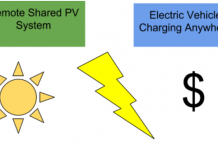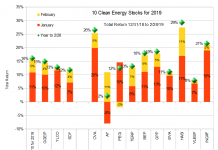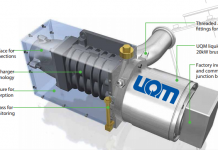Over the past few days (and continuing this week), Tom has been writing about about what he sold recently. Lately, I have been thinking about what I could buy with the cash I have sitting around, seeing as many alt energy stocks look like bargains compared to where they were trading at just a few short months ago. Over the weekend, I looked again into a stock I wrote about in May, Railpower Tech (RLPPF.PK or P.TO). I got a couple of requests for updates on this one so I decided to write about it. Railpower makes hybrid locomotives for short hauls in train yards, and its technology can also be applied to port cranes. The big selling point is that these locomotives can reduce fuel usage by 60% and various harmful emissions by 80%. The Decision What prompted me to look at Railpower again is the fact that the stock is down about 25% since I wrote about it in May, although nothing material has happened to the company. This is likely a case of a penny stock getting caught in the storm that is battering the markets. Risk is currently being repriced on a massive scale, and in my view we are at times overshooting to the downside, giving rise to good buying opportunities. After reading through the Q2 2008 financial statements and recent news releases, I decided not to commit any more money to this company for the time being, although I am not going to sell any of my small position. My main concern is the lack of contracts being signed, with only six units (5 locomotives and 1 crane) being sold in Q2 and Q3 2008. Given the high degree of operating leverage the company is taking on by building its own plant and moving away from contracting out assembly, volume will be of essence. The Good I’m keeping my current position intact because Railpower is blessed with something few of its small-cap peers have: ample cash reserves because of a recent C$55 million financing through convertible debentures in two tranches, C$35 million in late 2007 and C$20 million in May 2008. Railpower estimates its non-working capital cash needs at about C$25.6 million for 2009, mostly related to the construction of its new plant. With C$40.1 million in the bank, and the option to pay for the interest expenses associated with the debentures in shares rather than cash, the company is relatively well positioned to weather the current crisis in capital markets. Though management acknowledges it will need more cash for working capital purposes once production ramps up, this money should be relatively easy to access as contracts are signed. The Bad The new factory currently being built will have a capacity of 125 units per year. Dividing that number by four quarters yields 31.25, so selling about 27 new units per quarter would equate to operating at about 85% of capacity, which is pretty decent. As mentioned above, Railpower is currently nowhere near that number with six units in the last two quarters. The firm has cash in the bank, a great technology, no real competitors and one of North America’s most sophisticated institutional investors as its main financial backer, so at this stage in the game investors need to see the order book getting filled. Press releases about how cool the technology is just won’t cut it anymore, especially in an environment where investors need to see real operating cash flow to feel reassured. The Ugly Now the C$55 million in financing is great news to be sure, but there is a rub. As mentioned above, Railpower has the option of paying all interest expenses on both debentures (coupon rates of 5%) until maturity (2013) in shares rather than cash. In Q2 2008, Railpower elected to pay its interest expenses in shares, resulting in the issuance of 1,980,166 new common shares, or a 2.2% increase over the common shares outstanding prior to that period (89,495,458). The holder, for its part, has the option of being paid the whole of the principal in common or another class of shares. For the C$35 million debenture, the conversion price is set at C$0.30 per share, which would result in 116,666,667 new shares being issued. For the C$20 million debenture, the conversion price is set at C$0.40 per share, which would result in 50,000,000 new shares being issued. As at June 30, 2008, there were 91,475,624 shares issued and outstanding. The debentures are secured by a claim on anything that’s “movable” on the balance sheet (i.e. not land or a plant), which encompasses all of the assets that actually matter right now. Paying interest expenses via share issues is a double-edged sword for the company’s shareholders: on the one hand, bankruptcy risk is nearly eliminated in the near-term; on the other, if the company can’t figure out a way to boost sales and generate operating cash flow, shareholders get progressively more diluted. In effect, this turns cheap capital (debt at 5% plus a tax shield) into very expensive capital (equity). While the cost of equity capital is not reflected through an immediate cash outflow, the opportunity cost in terms of not being able to raise money through an equity offering later on because of concerns over shareholder dilution is very real. In a context where the company is filling the order book, this situation isn’t an especially big deal as interest expenses can be paid in cash and existing shareholders can benefit from plenty of upside before the debentures mature and the massive dilution risk they represent materializes. However, in a context where the company isn’t selling units and no operating cash is coming through, management has the option of diluting shareholders instead of facing bankruptcy, which it could be argued reduces pressure to perform. The holder of these debentures, the OTPP, is in a position to have its cake and eat it to: if the company fails, it can get a good chunk of its money back, and if Railpower succeeds it’ll get a controlling position for what is likely to be a fraction of the company’s intrinsic value. Conclusion I don’t mean to sound like a bear on this stock and I am not. For one thing, I think the management team has exactly the right profile for the job. I like the proximity, both from a key personnel and from a geographic standpoint, to Bombardier, which is a global leader in rail transport. Any signs of the two cooperating on projects would be great news. I also expect that sales will pick up as the plant nears completion and as customers feel reassured that Railpower can deliver. But as a small minority shareholder, I can’t help but feel a little uneasy at potentially being diluted if management fails to sign sales contracts. I therefore want to see signs of commercial success before dipping my toes any further, which would materialize as sales edging closer to an average of 27 units sold per quarter. DISCLOSURE: The author is long Railpower Tech DISCLAIMER: I am not a registered investment advisor. The information and trades that I provide here are for informational purposes only and are not a solicitation to buy or sell any of these securities. Investing involves substantial risk and you should evaluate your own risk levels before you make any investment. Past results are not an indication of future performance. Please take the time to read the full disclaimer here.








